 Filtering Content Recommendations
Filtering Content Recommendations
Filters let you create granular views of data. A filter is composed of a field, conditions, and target. For example, Published (field), After (condition), January 1 (target). Content view, Insight view, and Engage view each have separate filters.
You should organize compound filters from widest-to-narrowest focus. For example, set a compound filter using source, main category or folder, and folder exclusions like so:
- Source—is at least one of—www.MySite.com
(You have multiple sites and want to analyze only one of them.) - Original URL—contains—/Products/
(You want to see how your products are performing with site visitors.) - Original URL—does not contain—/archived-products/
(You do not want to see products that are discontinued or otherwise archived.) - Original URL—does not contain—/discounts/
(Exclude discounted products from the analysis.)
After you create one or more filter definitions, save each one so you can view them repeatedly. However, you cannot use a saved filter in another section Content recommendations: Groups of content based on flow rules. For example, a Europe section may include blog posts about London, Amsterdam, or Paris; while an Asia section may include blog posts about Shanghai, Hong Kong, or Tokyo.. (That is, you cannot use a saved Insight filter for Engage data. So create and save filters in each view.)
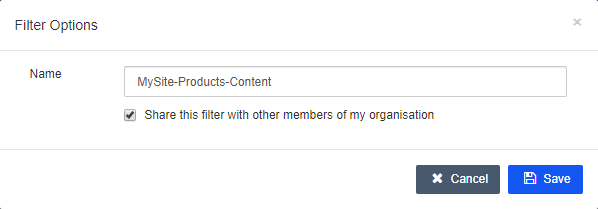
To use a saved filter, open the filter menu in any view and select the filter that you want.
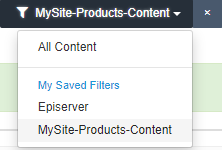
If you modify a filter's criteria, instead of saving a new filter, you can update the saved filter from the Save As menu.
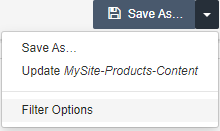
Select Filter Options to change the filter name, share the filter with others, or delete it.
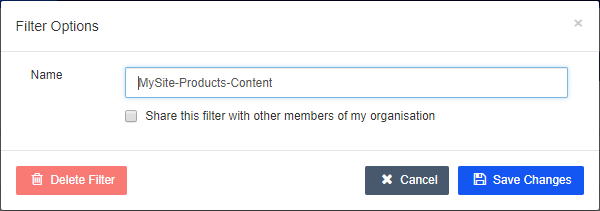
If you share the filter with other members, the filter is moved from My Saved Filters to Shared Filters in the filter menu.
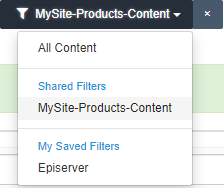
If a content item Content Recommendations: A web page that has an identifier associated with it. is marked as Unapproved, Engage does not include it in recommendations. To avoid Unapproved content, add the Approval State filter to show only approved content. Add a filter for an import date.
An import date corresponds to the first time a user interacted with a piece of content after the Optimizely tracking was put in place. An import date can be weeks, months, or years after the published date.

Filtering on multiple goals to content

Filtering content that has little or no impact on goals
To understand which content is having little or no impact on goals Content Recommendations: A set of behaviors that you want someone to perform, such as filling out a form, requests for demos, downloading a resource, or viewing three pages on the Financial site. This helps to determine how interested a visitor is in the content. The idea is that people who view three pages on a financial site may be very interested in, say, Retirement planning., change the condition to does not include as shown:

Filtering specific content
To see the performance of a specific piece of content, you can set the following field and condition:

Filtering content in a section
Use this filter to see pieces of content in a section:

Filtering pay-per-click (PPC) channel
PPC Pay-per-click, is an internet advertising model used to drive traffic to websites, in which an advertiser pays a publisher when the ad is clicked. Pay-per-click is commonly associated with first-tier search engines. With search engines, advertisers typically bid on keyword phrases relevant to their target market. Source: Wikipedia channel filters are created for you. Contact Optimizely support. Channel filters provide visibility into what drives content consumption.
